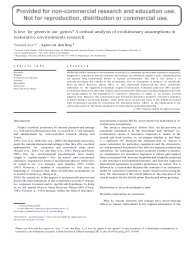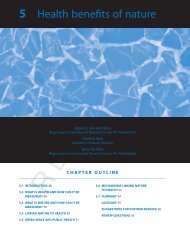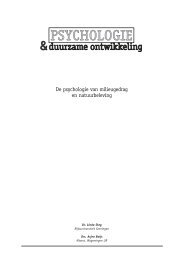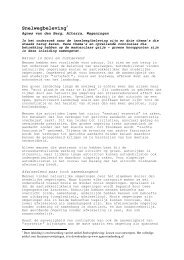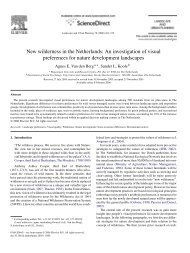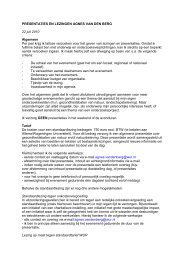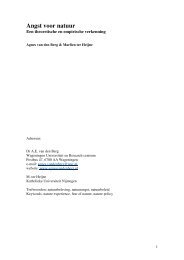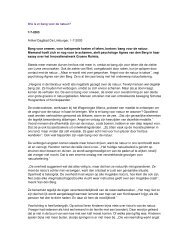Healing by Architecture Agnes van den Berg, Cor Wagenaar How ...
Healing by Architecture Agnes van den Berg, Cor Wagenaar How ...
Healing by Architecture Agnes van den Berg, Cor Wagenaar How ...
You also want an ePaper? Increase the reach of your titles
YUMPU automatically turns print PDFs into web optimized ePapers that Google loves.
environmental features that are not central to architecture, such as antiseptic soap dispensers, and<br />
evi<strong>den</strong>ce on environmental impacts that are only indirectly related to healing, such as impacts on<br />
acoustics and job turnover rates of hospital staff.<br />
To obtain a more accurate estimate of the amount and quality of the evi<strong>den</strong>ce base, the project<br />
The <strong>Architecture</strong> of Hospitals has commissioned a new review of evi<strong>den</strong>ce for healing properties<br />
of hospital environments. The scope of this review was more closely aligned to conventional<br />
definitions of the concepts of ‘architecture’, ‘healing environment’, and ‘health’. 3 This review<br />
focused on four key features of hospital buildings that have traditionally been considered<br />
components of healing environments: nature, daylight, fresh air and quiet. The review was<br />
restricted to medical and psychological health outcomes. A distinction was made between clinical<br />
evi<strong>den</strong>ce (e.g., evi<strong>den</strong>ce from studies conducted in healthcare settings or among clinical<br />
populations) and non-clinical evi<strong>den</strong>ce. Evi<strong>den</strong>ce was classified as ‘strong’ or ‘weak’ based on<br />
the quality of the research design and the rele<strong>van</strong>ce of the environmental manipulation to<br />
healthcare settings.<br />
A total of 97 studies were i<strong>den</strong>tified that fulfilled the criteria of the review. The outcomes of<br />
these studies provide sufficient evi<strong>den</strong>ce that presence of nature in or around buildings can<br />
positively influence health. More specifically, it has been demonstrated that viewing nature on a<br />
screen or through a window can reduce stress and pain, while presence of indoor plants can lift<br />
people’s mood and reduce self-reported symptoms of physical discomfort. Perhaps counterintuitively,<br />
the health benefits of direct contact with ‘real’ nature, such as a visit to a gar<strong>den</strong>, were<br />
found to be less well-established. The outcomes of the studies in the review also provide solid<br />
evi<strong>den</strong>ce that ventilation of fresh air can improve self-reported and medically diagnosed health.<br />
<strong>How</strong>ever, the evi<strong>den</strong>ce for health benefits of daylight in buildings was judged as weak and<br />
inconclusive, while the evi<strong>den</strong>ce for the health benefits of quiet was qualified as indirect.<br />
Although there is ample evi<strong>den</strong>ce for negative health impacts of noise, the role of the physical<br />
environment in producing or reducing negative health impacts of noise has only been<br />
demonstrated in a handful of studies.<br />
The review that was carried out for the project The <strong>Architecture</strong> of Hospitals focused only on a<br />
selection of environmental features that are rele<strong>van</strong>t to health and healing. As such, it does not<br />
provide a comprehensive overview of evi<strong>den</strong>ce for healing properties of architecture. In particular<br />
health benefits of frequently mentioned aspects such as color, personal space, personal control,<br />
and way-finding have not been addressed. Some of these aspects, such as personal space and<br />
interior design properties, are addressed in the articles in this section of the book. Both the review<br />
and the articles in this section confirm that there is sound evi<strong>den</strong>ce for the health impacts of<br />
healing environments which can no longer be ignored. <strong>How</strong> this evi<strong>den</strong>ce can be used to enrich<br />
the architecture of hospitals will be among the fundamental issues that will have to be addressed<br />
in the near future.<br />
Does healing <strong>by</strong> architecture imply that architecture should adopt the scientific approaches of<br />
medicine? Many of the articles collected here radiate a somewhat clinical atmosphere, an effect<br />
highlighted <strong>by</strong> many references (that were included in their original template). Though the<br />
emphasis on isolated aspects and statistical methods differs dramatically from the allegedly<br />
somewhat anarchistic and intuitive approach inherent in the science of architecture, it is hard to<br />
find intrinsic reasons for seeing them as incompatible.<br />
[Jane Malkin opens this part <strong>by</strong> demonstrating the immense importance of environmental<br />
considerations in the architecture of hospitals, making abundantly clear that architects and<br />
hospital managers alike should pay far more attention to these considerations, as they have a<br />
direct impact on the hospital's core functions.]<br />
Having its origins in environmental psychology and emulating the scientific methods of<br />
3 <strong>Agnes</strong> <strong>van</strong> <strong>den</strong> <strong>Berg</strong>, Health impacts of healing environments: A review of the benefits of nature, daylight,<br />
fresh air and quiet in healthcare settings, Groningen 2005.<br />
3



